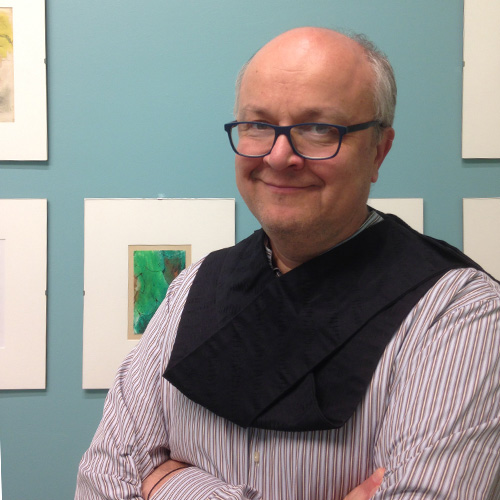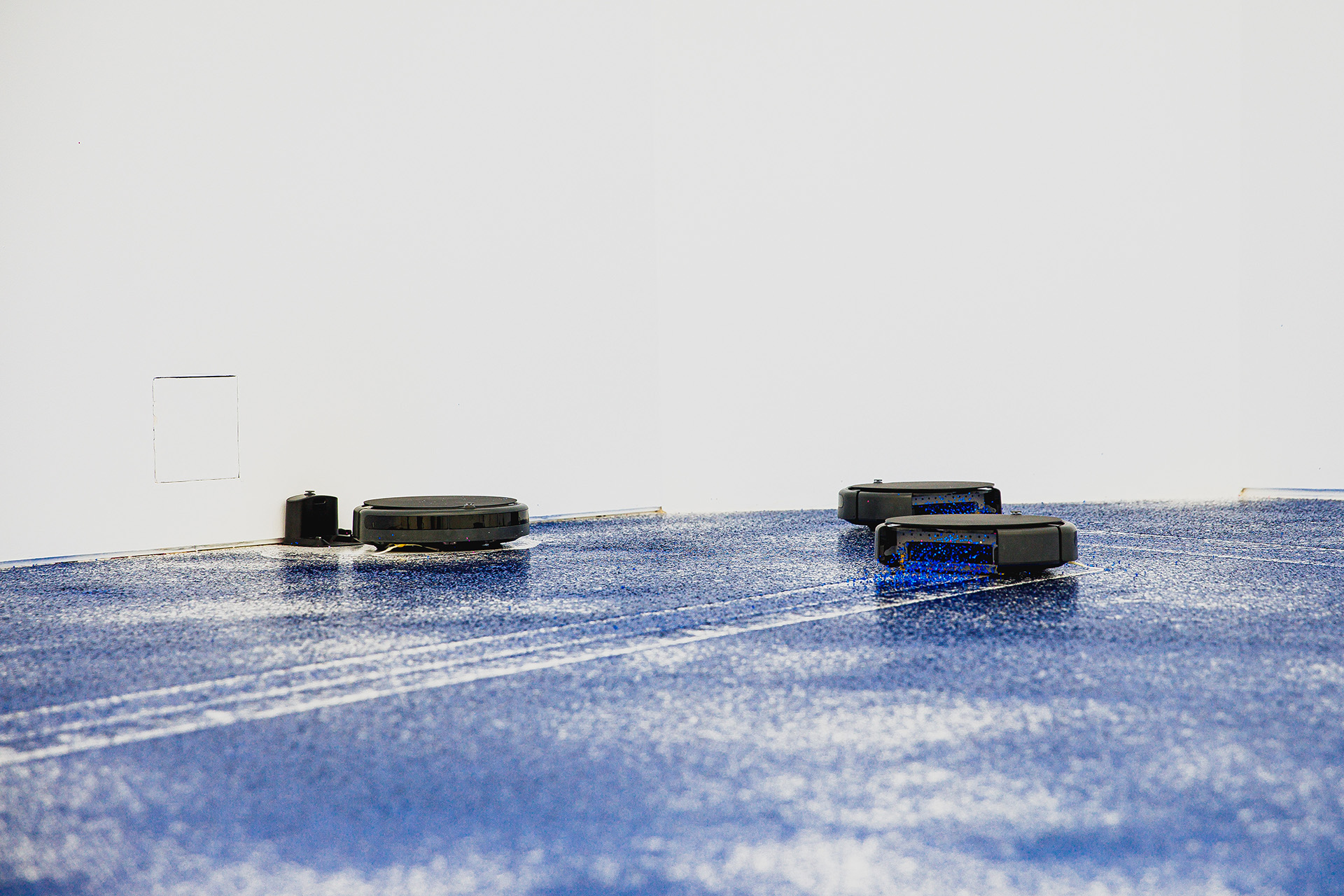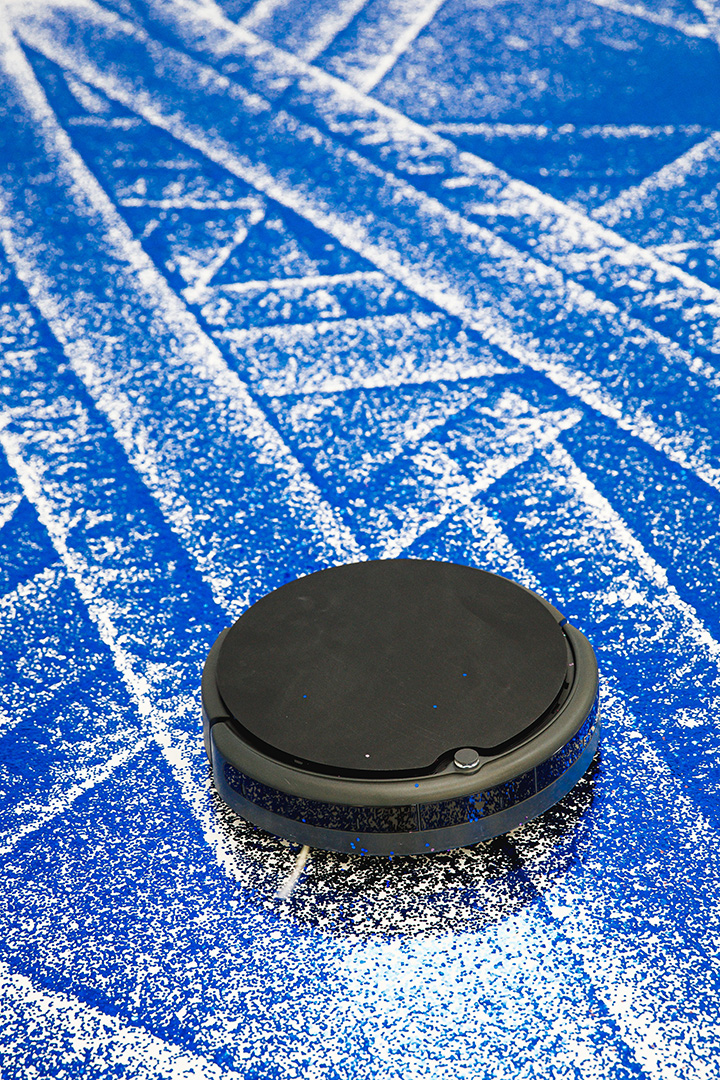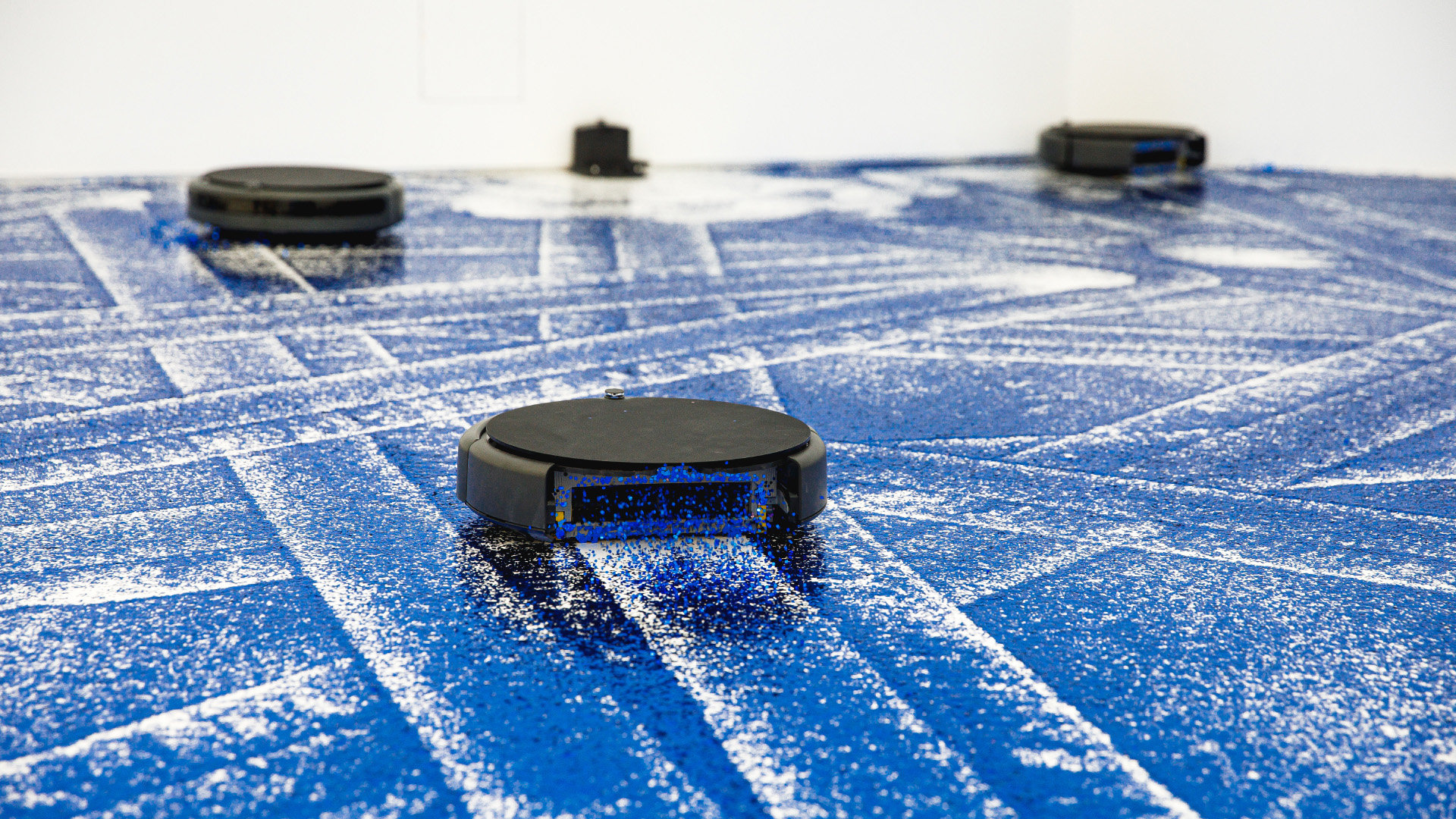Blog
Pigment, Glitter, Pixel:
On the Element of Color in :mentalKLINIK's BITTER MEDICINE #02
22 October 2020 Thu
The colors of the glitter used by :mentalKLINIK in the BITTER MEDICINE #02 project are switched at specific time intervals. The Puff Out installation, which is the focus of the work, is based on the instant patterns created by the endless and non-repetitive movements of 8 smart robotic vacuum cleaners on a floor covered with glitter, and the combination of light and form is digitally transferred to the audience 24/7 via the Borusan Contemporary website, facilitated by online systems.

NECMİ SÖNMEZ
buero@necmisoenmez.de
Photograph: Yeşim Demir
The project, which was launched with fuchsia colored glitter on September 17, continued with gold on October 1, and the Yves Klein Blue on October 19. Yves Klein, who has played an important role in the development process of Contemporary Art History, reached an engagement that continues until today with the color he named. In this article, I aim to develop a perspective that examines :mentalKLINIK’s approach to this iconic artist as well as the color interpretations they developed in the BITTER MEDICINE #02 project.
In his short life (1928-1962), Yves Klein put his signature on important projects one after the other, placing conceptual and performative elements with experimental characteristics on the backbone of his practice. Among them, the ultramarine blue color, which he patented in 1960 as IKB (International Klein Blue, IKB, = PB29, = CI 77007), holds particular significance. [ 1 ] After investigating the psychological effects of colors for a long time between 1949-55, Klein experimented with organic powder paints that create the indigo effect. Using a special adhesive material (Rhodopas) that does not spoil the shiny effect of the powder paint, Klein became the creator of a blue color that almost drew in the onlooker. Using this color in his canvases after 1956, the artist reached international recognition in a short time with the exhibitions he opened one after the other. The seminal presentation, which made Klein one of the critical figures in in post-war period, was an exhibition he opened in Paris in 1960 in the Galerie Iris Clert under the title of Le Vide [The Void]. [ 2 ] The artist had created a performance by painting the walls of the small gallery white, without exhibiting a work of art. [ 3 ] Klein’s canvases and sculptures using ultramarine blue remained on the agenda of the international art scene after his death and became an inspirational resource for many generations of artists. Today, Yves Klein Blue (IKB), which does not lose its iconic effect, appears as a visual reference point in the exhibition BITTER MEDICINE #02. Developing a different color interpretation in the 1950s, Klein's starting point was natural pigments. The starting point of the color interpretation developed by :mentalKLINIK in 2020 is the glitter produced industrially in octagonal shapes. Having the character of a ready-made, glitter clearly refers to the pixel phenomenon that forms the basis of the digital production model, as glitter is shaped by the effects of light falling on it.

:mentalKLINIK, Bitter Medicine #02, 2020.
It is possible to interpret the different perceptions left by the colors of BITTER MEDICINE #02 on the audience as a integrated radical action that eliminates the line between reality and fiction, within the framework of the concept of Hyper-Reality, which emerged after an extensive period of research for :mentalKLINIK. [ 4 ] The glitter, whose color values are played with in a fictional way, are in a constant state of movement with both the light system used in the installation and the electrification they have in their bodies, presenting to the audience a very different set of colors that cannot be seen with the naked eye with the help of cameras. This colorfulness brings the viewers a kind of visual perception bridge, fed by the attractive, striking, digital-color-scales created with special filters and applications brought up by the 8K screen technology. Those who cross this bridge now face a short-term collision of perception as they encounter high-value lights, shadow factors, and color clusters (created with computer-based virtual reality) that are "edited for the screen" beyond normal colors. The reason why those who follow BITTER MEDICINE #02 cannot separate their eyes from the screens (whether it is a computer screen or a mobile phone) are closely related to :mentalKLINIK’s creation of a "new aura" in the audience by skillfully bringing together manipulated facts of color and tone. BITTER MEDICINE #02, which is physically constructed in an exhibition space while presenting the phenomenon of color determined by digital codes to the viewer through online channels, opens the door to the true hyper-active-color scales. This trend has an almost dizzying appeal as it is presented to the audience with its digital color spectrums, different glitters, rainbow effects, just as Yves Klein used his pigments to create an extraordinary ultramarine blue using a different binding material.
“Constructed colors”, one of the basic elements that make up the striking visuality of the BITTER MEDICINE #02 project, also have a psychological depth. The uncertainty that has set the agenda since the first days of the pandemic made it almost compulsory for individuals to withdraw in order to construct a different world for themselves and to construct "new auras" with digital possibilities. I think that underlying the seductive characteristics of the colors we encounter in the BITTER MEDICINE #02 project is the possibility of making a temporary vaccine of happiness to individuals who are skeptical of the near future, by which they can overcome their fears. After watching the work for five or ten minutes, the effect of "temporary happiness" becomes even more obvious, underlining the positive feeling that somehow transcends the present and flows towards an undetermined horizon. The moments of satisfaction, which are difficult to translate into these words, underline the strong psychological framework of the colors designed by :mentalKLINIK. One of the most important facts brought up by these digitally coded color combinations is that they trigger "hybrid sensitivities" such as happiness-fear, excitement-stagnation in the perceptions, psychology of the audience. :mentalKLINIK had described these hybrid sensitivities as “microclimates.” [ 5 ] Considering the current circumstances that the viewers bear testimony to, such hybrids not only make the present, which we define as the new contemporary, intolerable, but also make it possible for the audience to develop a more neutral perspective (neither positive nor negative) for the future.
[1] Ingrid Pfeiffer, Carla Orthen: Biografie, Oliver Berggruen, Max Hollein, Ingrid Pfeiffer (Yayınlayanlar): Yves Klein Cantz, Ostfildern-Ruit 2004, p. 222.
[2] ibid., p. 22.
[3] In this gallery where Yves Klein had painted the walls white, Mübin Orhon’s abstract paintings had been exhibited before. For more detailed information, please see: Necmi Sönmez, Paris Tecrübeleri École de Paris – Çağdaş Türk Sanatı: 1945-1965, Yapı Kredi Publishing, Istanbul 2018, p. 82-83.
[4] Hyper Reality does not correspond to the term “hyperreality.” I’m using this terminology in relation to Jean Baudrillard’s use in his Simulacra and Simulation (1994).
[5] Microclimate Zone, :mentalKLINIK-Jérôme Sans Interview, Obnoxiously Happy, La Patinoire Royale, Brussels 2018, p. 104 (exhibition catalogue).
ABOUT THE WRITER
Necmi Sönmez
Received his education on art history at Mainz, Paris, Newcastle and Frankfurt Universities. He received his PhD at Johann Wolfgang Goethe University on sculpture Wolfgang Laib. Recently he is working as independent curator in Düsseldorf for different institutions among them Tate, Staatliche Museen Berlin, Borusan Contemporary, Kiasma, Kunsthale Deutsche Bank, Sabancı Museum. Since 2015 he is collaborating with SKIRA editore, Milan, as an independent editor.




